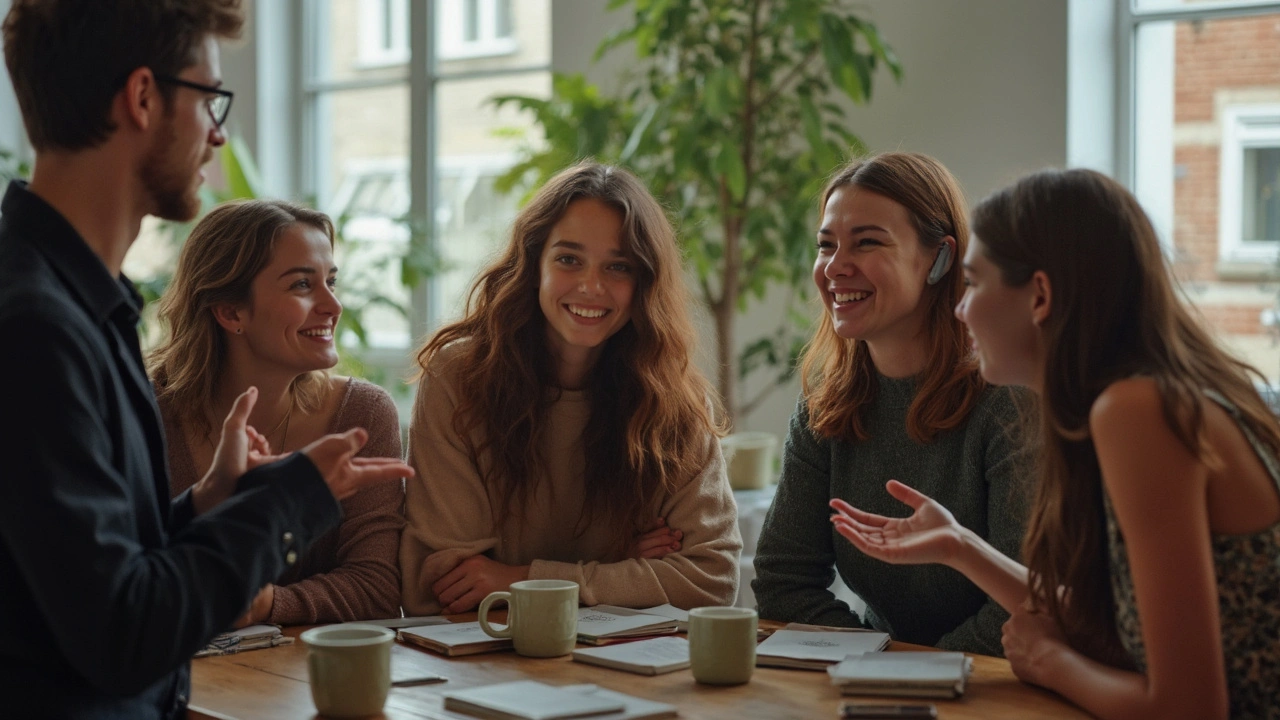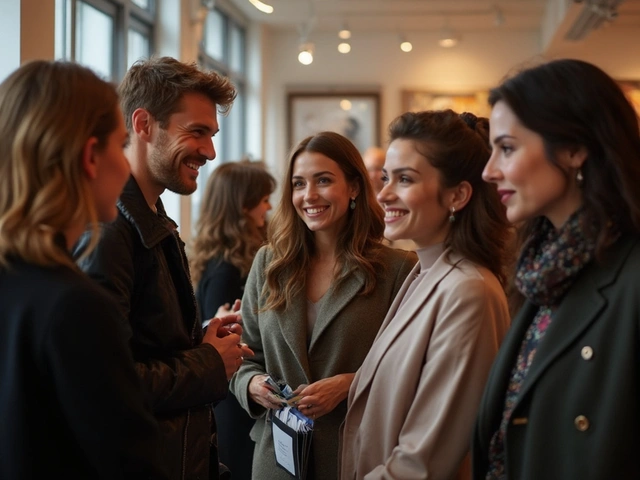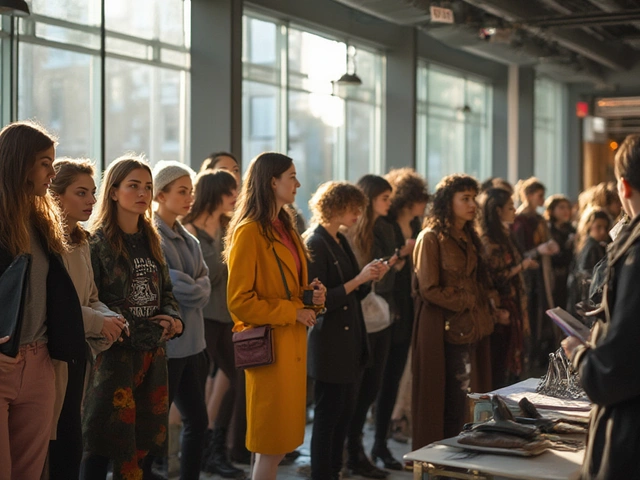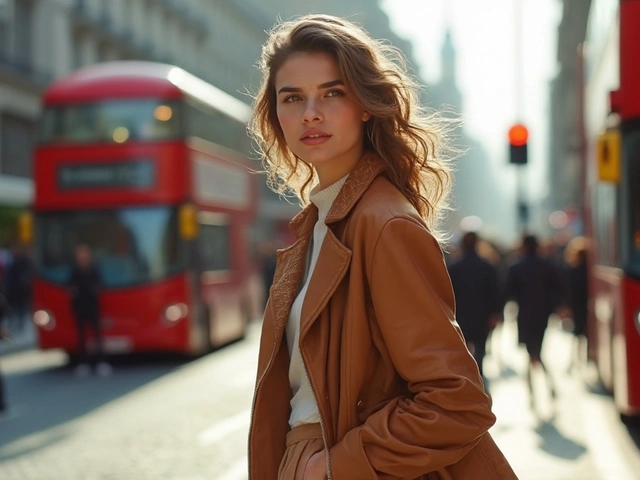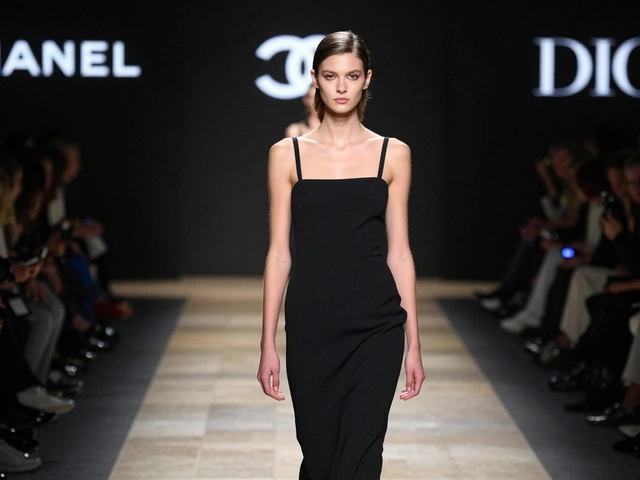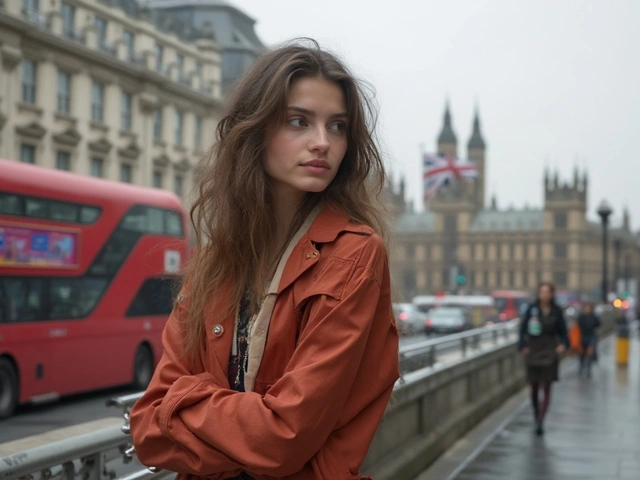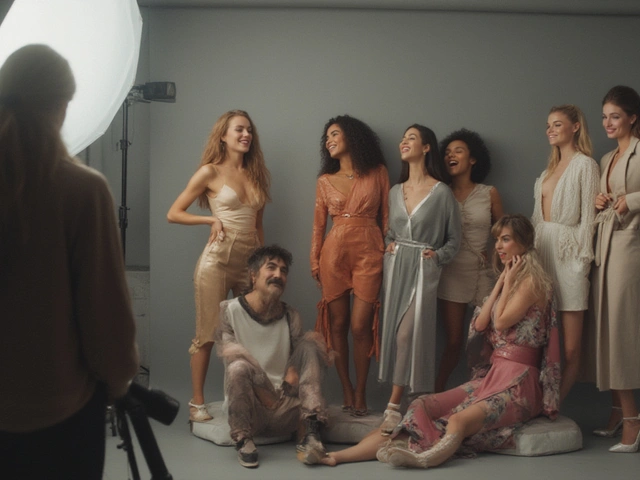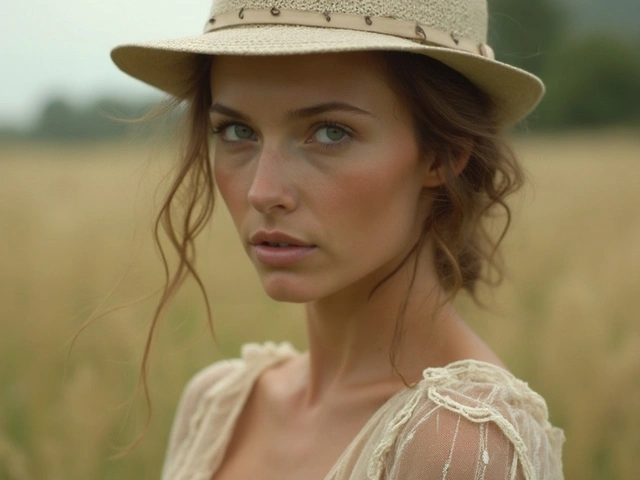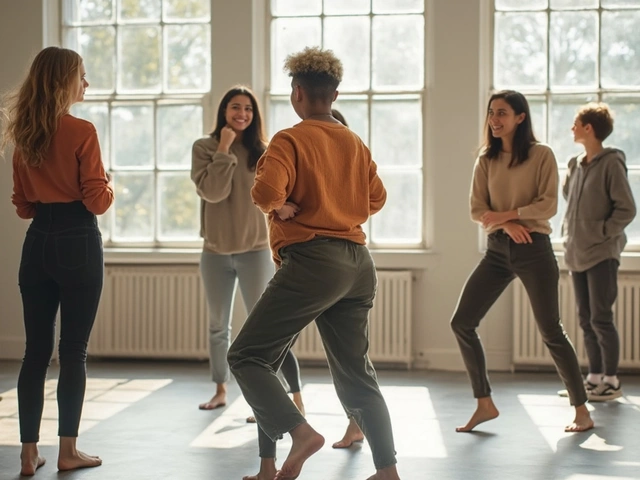Forget those awkward, mannequin-like photos—nothing kills a shoot like a pose that screams 'forced.' The secret? Direction that actually gets models to relax and move like themselves. The trick isn’t barking commands, it’s sparking real reactions and making the person in front of the lens feel comfortable.
Think about how people act when they’re out with friends or deep in conversation. You want to catch that vibe, not stiff arms and fake smiles. This won’t happen by telling someone to just 'look natural.' Most models—especially newcomers—have no clue what that means. They’ll freeze up or overthink every move.
Instead, use simple cues that invite a real response. Instead of 'put your hand on your chin,' try 'imagine you just heard something hilarious.' The difference is wild. You’ll get a smirk, a shift in posture, maybe an eyebrow raise—little things that make photos feel human. Don’t be afraid to demonstrate a pose yourself; it can break the ice and show what you mean.
Always keep your directions easy to follow. Skip the confusing jargon about 'elongating limbs' or 'softening jawlines.' The clearer you are, the better. Ask for actions, not statues—like walking slowly, twirling a jacket, or looking over a shoulder for a candid effect.
- Why Natural Poses Matter
- Reading a Model’s Comfort Level
- Building Real Connection On Set
- Giving Practical, Actionable Directions
- Break the Standard Pose Routine
- Feedback and Coaching in Real Time
Why Natural Poses Matter
There’s a huge difference between a photo people actually like and one that gets scrolled past in a second. Most of the images we remember and share—whether they're on Instagram, in magazines, or used by real brands—just feel real. This comes down to natural and authentic expressions. It’s not a hunch; a recent report from Getty Images found that ads using authentic, less-posed photos can boost engagement rates by 15% or more compared to obviously staged shots.
Natural poses make humans on the other side of the camera seem relatable and approachable. Nobody wants to see a stuck, statue-like stance when they’re looking for real connection in a photo. Whether you're shooting fashion, lifestyle, or even product stuff, people connect more when the photo looks like a slice of actual life. Top brands like Nike and Glossier have pretty much built their whole image around real movement and emotion rather than perfectly modeled stances.
Take a look at how this plays out when brands pick campaign images:
| Photo Style | Average Engagement (Likes/Shares) |
|---|---|
| Staged/Posey | 1200 |
| Natural/Authentic | 1380 |
See the bump? People just respond to something that feels genuine. This is why every successful photographer keeps model poses fluid and relaxed instead of stiff or dramatic. It’s not about ignoring good technique—it’s about getting shots that actually resonate with the viewer.
So, next time you’re behind the camera, remember: a relaxed look will go further than the most technically perfect, rigid pose. Even minor shifts—like a model moving their hand naturally or breaking into a laugh—can turn an OK shot into something memorable.
Reading a Model’s Comfort Level
If you want authentic expressions, you’ve got to tune in to how your model actually feels during the shoot. There’s no single recipe, but keeping an eye out for small signals can change the whole energy. If a model’s voice gets quiet, or their shoulders creep up toward their ears, that’s usually a sign they’re awkward, nervous, or just not comfortable yet.
Here’s something that’s backed up by experienced photographers everywhere: the best model poses happen when the person feels seen and respected. If they feel rushed or ignored, forget about catching any real emotion. Taking five minutes just to chat, ask how their day is going, or what kind of music they like can make a surprising difference.
Watch out for these signs your model might be getting uncomfortable:
- Unnatural, stiff movements that just don’t look relaxed
- Forcing smiles or not making eye contact
- Repeating the same pose over and over, almost like they’re on autopilot
- Answering every direction with just "okay" or not adding their own input
If you spot any of these, slow down. Sometimes, just asking "Are you good with this?" or "Anything that makes you feel a bit weird?" is enough to shift the mood. Show them some shots so they see what’s working. Models, especially those new to shooting, often relax once they see good photos on the screen.
Remember, every model has boundaries. Respect them, don’t push past them, and you’ll earn trust that makes for much better shots. Building comfort isn’t about technique—it’s about treating the person, not just posing a subject.
Building Real Connection On Set
If you want your model to give you real, believable poses, you’ve got to build a connection first. When there’s trust, people let their guard down—and that shows up in every shot. A huge 87% of models in a 2023 PhotoShelter survey said they perform better when they actually feel comfortable with the photographer. Awkward vibes lead to awkward photos, it’s as simple as that.
Here’s how you set a chill and welcoming atmosphere on set:
- Start with honest, human conversation. Ask how their day’s going. Share a quick, relatable story about your own day. This helps everyone relax from the get-go.
- Keep your energy positive and genuine. People pick up on fake enthusiasm or stress fast. If you’re calm and friendly, models will mirror that vibe.
- Explain your vision and what you want from the session. When models know the project’s mood and goals, they show up better. Transparency makes your model a real team player, not just a subject.
- Play some background music. It helps people loosen up way more than silent, tense rooms. Ask the model for their favorite songs to make it personal.
- Break the ice with a few test shots—no pressure, nothing official. Show previews on your camera’s screen and hype them up when something looks great.
Respect is big here. Always check in before giving feedback, especially if you’re going to adjust their pose or ask them to try something new. No one wants to feel bossed around or objectified. Treat every shoot as a collaboration, not a one-sided show.
| Connection Tip | Impact on model poses |
|---|---|
| Share your creative plan | Model knows what vibe and look to aim for |
| Ask and listen to model's input | Model feels invested and more expressive |
| Create a relaxed environment | Natural smiles and stances come easier |
Bottom line: when you make a real effort to connect, your model’s comfort turns into chemistry that shows in the photos. Whether you’re working with a seasoned pro or a first-timer, that real connection gives you the most authentic results every time.

Giving Practical, Actionable Directions
Getting natural results starts with saying exactly what you want—and making it feel doable for the person you’re directing. Don’t just tell someone to ‘work with their angles’ or ‘relax their eyes’ and hope for the best. Instead, break it down. If you want a head tilt, actually show it. If you want a genuine smile, ask them to remember something funny or think about a person they love. The clearer your ask, the less guesswork for the model.
Here are some ways to help models hit those model poses without looking stiff or confused:
- Use action-based cues. Say, “Walk toward me like you’re late for the bus,” or, “Pretend you’re talking to a friend across the street.” Movement leads to more believable body language and facial expressions.
- Keep commands short. “Shoulders back, chin up, eyes on me.” Long instructions get lost and make things awkward. When you keep it simple, people stay present.
- Show, don’t just tell. Strike a sample pose yourself or use a reference photo. Models pick up fast when they see what you want.
- Play with prompts that bring out real emotion. “Can you recall your proudest moment?” or “Look at the camera like you just pulled off something awesome.” These usually get way better reactions than canned smiles.
- Give feedback on the spot. If something works, say it. “That twist in your shoulder looks great—hold it!” Quick encouragement means they know what to repeat.
Research from University College London found that action-oriented instructions boost performance in creative tasks. It’s the same with posing. Action is easier to connect with than abstract visuals. Swap ‘look happy’ for ‘smile like you heard the best news of the year,’ and you’ll see the difference in every frame.
Break the Standard Pose Routine
Every photographer has seen it: models cycle through the same handful of poses—one hand on the hip, staring into the distance, that generic half-smile. The robots have taken over! But here’s the thing: sticking to cookie-cutter poses won’t get you standout shots. People scroll right past them. To really nail authentic moments, you have to break out of the standard pose routine.
Did you know that in a 2018 survey of commercial photographers, nearly 70% said their clients specifically asked for photos that don’t look obviously posed? That tells you everything—you need to shake things up and help models move beyond autopilot.
Try ditching pose lists. Instead, work with prompts and actions. Give your model something to do:
- Tell them to walk toward the camera, then away, or even spin around.
- Throw out a silly challenge, like ‘pretend you just found $100 on the ground.’ People react with surprise, laughter, and energy—way more memorable than just smiling on command.
- If you’re outdoors, have them interact with the surroundings. Sit on stairs, lean against a wall, or pick up a prop nearby.
Mixing up poses with movement and scenarios not only helps models loosen up, but you’ll also notice more natural body language and genuine expression. The first few minutes might feel awkward—everybody is just warming up—but after that, you’ll get the good stuff. Big brands actually build entire shoots around this strategy, focusing on lifestyle moments over stiff stances. Authenticity pops in every frame.
If you ever get stuck or sense the energy dipping, try a quick reset. Ask the model to shake out their hands, jump around, or make a goofy face—whatever works to snap out of ‘pose mode’ and back to being themselves. This turns the pressure down and makes space for your model poses to actually show personality.
Feedback and Coaching in Real Time
If you're directing a model and want truly natural poses, real-time feedback is everything. Immediate coaching lets you tweak small things—like hand placement or posture—so the photos get better with every click. No one likes guessing what the photographer wants. That tension shows up on camera. Keep the vibe relaxed by speaking up while you shoot.
Instead of waiting until the session's over, call out what's working. If a certain smile looks great, say it. When you notice a pose feels off, guide them gently to adjust. A 2023 survey by The Fashion Model Directory showed that 78% of models said positive, clear direction made them feel more confident and relaxed on set. That confidence is what unlocks those natural, unforced shots.
Here’s what works during a shoot:
- Give quick, specific praise: “That laugh was perfect—let’s get that angle again.”
- Suggest tweaks, not total changes: “Your shoulders look best a bit more relaxed. Try letting them drop.”
- Use actionable steps: “Take one step forward and look towards the window.”
- Keep your tone encouraging, never critical. If something’s not working, offer a quick demo.
What’s cool is that instant adjustments can save you hours of editing or reshooting later. But don’t overload the model with too many notes at once. Keep it simple—one adjustment, one action at a time. It’s about building momentum, not perfection.
| Feedback Style | Model Response (per industry survey) |
|---|---|
| Encouraging, actionable | 85% felt more engaged and relaxed |
| Vague, generic | 63% reported feeling stiff or confused |
| Critical or negative | 95% felt less likely to loosen up |
Keep the communication flowing the whole time. When models know they can trust your direction, they stop second-guessing and start getting into the shoot. That’s how you get the natural poses everyone wants.
